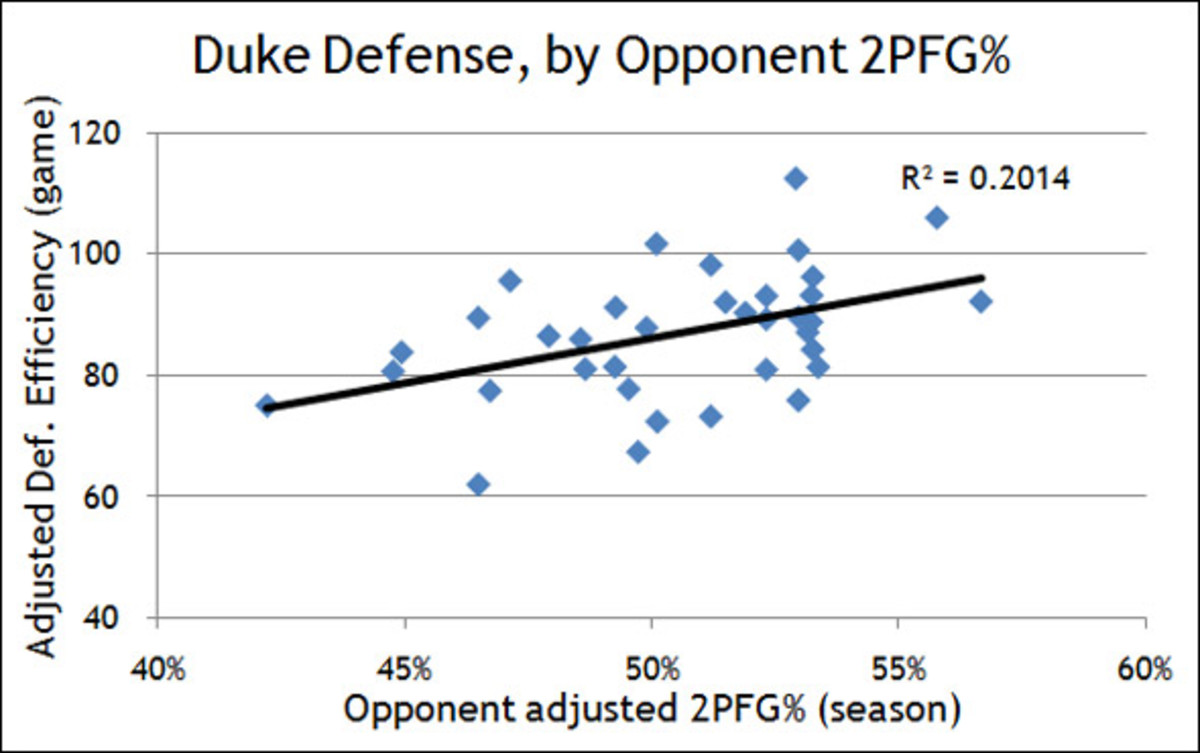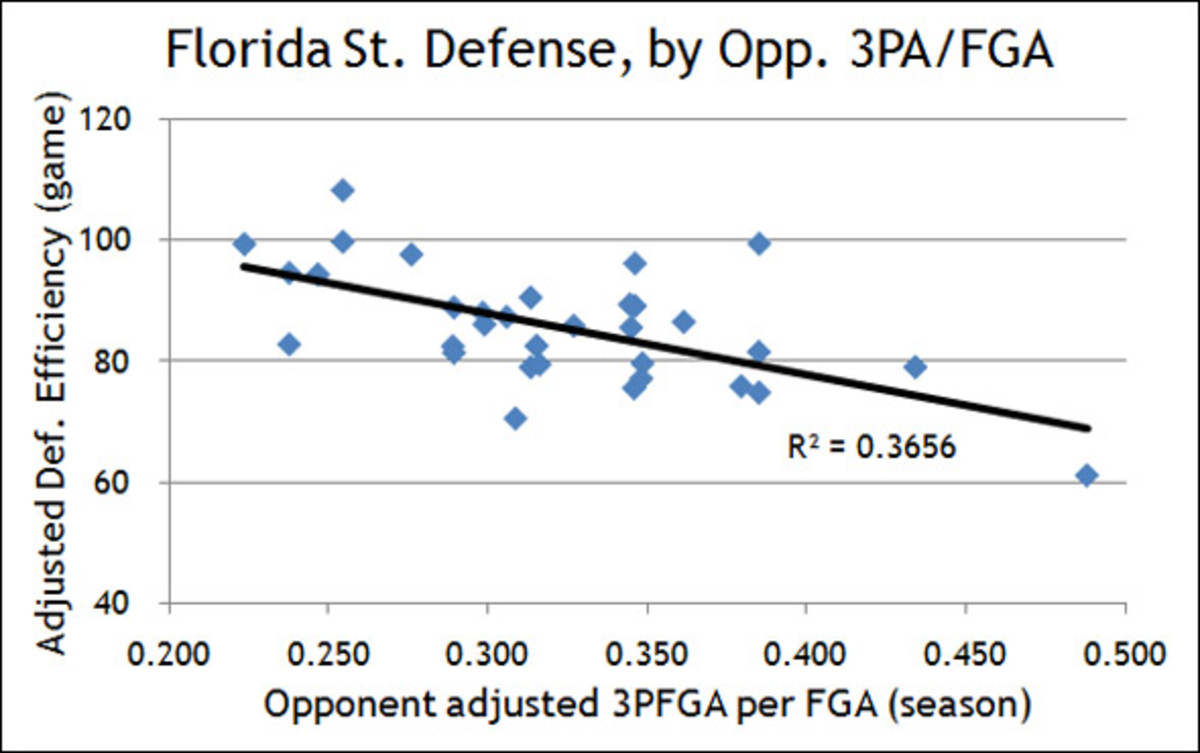Matchup Issues: Sweet 16 And Beyond


Is Florida State's defense perfectly suited to stop VCU? (Jamie Squire/Getty Images)
(Ed: Today's guest post is from David Hess, who runs The Audacity of Hoops, a blog dedicated to statistical analysis of college basketball, and also writes for TeamRankings.com. He has discovered some key Sweet 16 matchup issues by analyzing adjusted efficiency and adjusted box-score data.)
Many of you are probably familiar with Ken Pomeroy’s opponent-adjusted offensive and defensive efficiency data. Using those values, a team’s raw efficiency in any game can be adjusted for opponent strength, resulting in a number that represents how the team would have fared if it was playing an average NCAA opponent. This allows games against opponents of varying quality to be compared on equal footing.
None of you, on the other hand, is probably familiar with the opponent-adjusted box score data used to drive the possession-based game simulations on TeamRankings.com. These are just your typical tempo-free stats -- offensive rebounding percentage, turnover percentage, etc. -- but also adjusted for opponent strength, in a simple power-rankings-style method.
I used these adjusted box-score and adjusted efficiency values to find which Sweet 16 teams seem to have matchup issues that might bode well or ill for future rounds, or that might help explain results from the opening weekend.
We should have seen Duke’s poor defensive game against Michigan coming, and Kansas is the worst remaining matchup for the Blue Devils.
The scouting report on Duke is that they have fantastic perimeter play, but are weak in the middle. Then again, that was the scouting report on the Blue Devils last year, and they ended up doing all right for themselves. The problem is, this year the numbers agree with the eye test.
The following chart plots the season-long adjusted 2PFG% of Duke’s opponents on the horizontal axis, and Duke’s adjusted defensive performance against them on the vertical axis (lower is better). Even after accounting for the quality of opposing offenses, Duke’s defense plays worse against teams that shoot the ball well from two-point range.

For comparison, here is the same chart for last year’s title winning team. This is more normal – since we’re already adjusting for the overall quality of the opponent offense, there is no apparent pattern:

It turns out that Michigan was one of the worst possible matchups for Duke’s 2011 defense, as they’re 5th in the country in adjusted 2PFG%. Here is how the rest of the teams left in the tourney stack up to the Wolverines:
It looks like Duke fans should be rooting for Kentucky to emerge from the East region, and Wisconsin from the other half of the bracket.
Florida State’s defense was built to shut down Notre Dame’s offense, and to an even greater extent, VCU’s.
The Seminoles are the 31st best team in the country in terms of adjusted three-point field goal percentage allowed, at 31%. Yet despite holding teams to a low shooting percentage, they also somehow convince their opponents to keep heaving -- 40.3% of an average NCAA team’s shots would be from three point range when playing Florida State. This combination makes their defense deadly for teams that are willing to settle for threes, as you can see from the following chart, which plots an opponent’s tendency to shoot three-pointers against Florida State’s adjusted defensive performance versus said opponent:

Both Notre Dame and VCU fall into that “fire away” category, but potential regional final foe Kansas doesn’t have the same vulnerability:
Ohio State’s defense may be slightly overrated due to feasting on teams that don’t take good care of the ball, and they’d probably rather see Kansas than Wisconsin in the title game.
Against teams that are worse than average in terms of adjusted offensive turnover percentage, Ohio State’s defense is phenomenal, posting an adjusted defensive efficiency of 75.4, which would be by far the best in the country. Against teams that are better than average at holding onto the ball, however, the Buckeyes have an average defensive rating of 91.9, which would be good for only 26th nationally. Unfortunately for them, every remaining team is better than average:
Badgers
